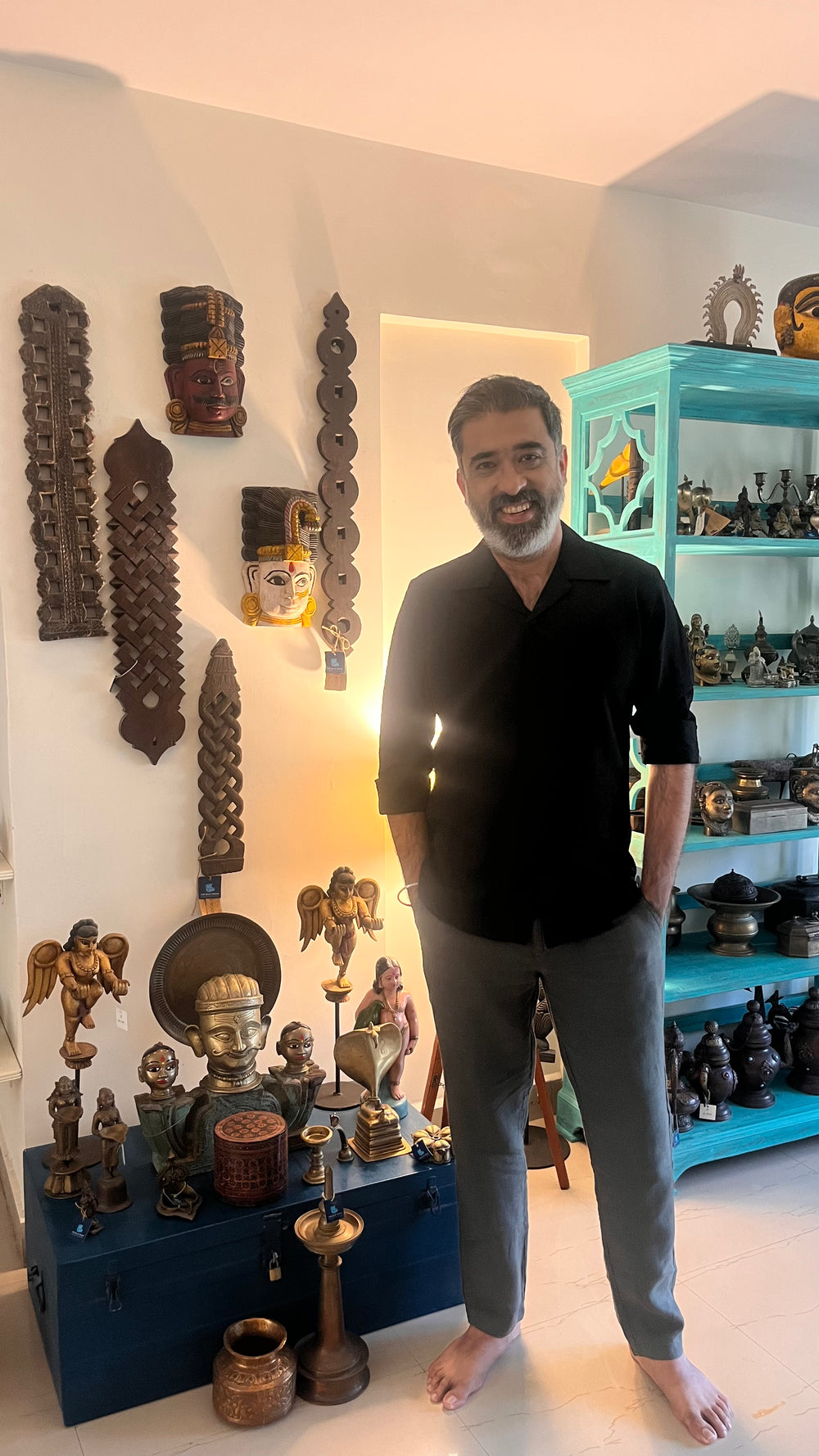Vintage Sandalwood Ganesha
This vintage Ganesha idol is a truly exceptional work of art. It is handcrafted from a single block of sandalwood and is over 50 years old. The level of detail and precision in the carving is truly impressive, with every curve and contour of the Lord's form captured flawlessly. The idol depicts Lord Ganesha in his classic form, with four arms and his trunk reaching out to his outstretched left hand. The piece is in mint condition, which is unusual for old wooden pieces, and its warm texture adds to the overall charm of the piece. It's a highly collectible artefact that would be a prized possession for any Ganesha devotee or art collector.
Ganesha is widely revered as the remover of obstacles, the patron of arts and sciences and the deva of intellect and wisdom. As the god of beginnings, he is honoured at the start of rites and ceremonies. Ganesha is also invoked as patron of letters and learning during writing sessions. Several texts relate mythological anecdotes associated with his birth and exploits and explain his distinct iconography. Ganesha likely emerged as a deity as early as the 2nd century AD, but most certainly by the 4th and 5th centuries AD, during the Gupta period, although he inherited traits from Vedic and pre-Vedic precursors. Hindu mythology identifies him as the restored son of Parvati and Shiva of the Shaivism tradition, but he is a pan-Hindu god found in its various traditions.
History of use of statues of gods in Indian religious culture: The history of statues in Indian religious culture spans over two millennia, showcasing diverse styles. The Mauryan era saw the emergence of stone-carved statues, marked by a certain austerity and simplicity. In subsequent centuries, during the Gupta period, sculptors honed their skills, producing lifelike, highly detailed statues. The Gupta style emphasized grace, idealized proportions, and exquisite facial expressions, exemplified by the iconic standing Buddha statues of Sarnath. As time progressed, regional variations emerged. In the South, the Chola dynasty excelled in bronze casting, creating dynamic, sensuous depictions of deities. In the North, the Rajput and Pala dynasties contributed distinctive styles, characterized by intricate ornamentation and unique iconographic features. The Mughal era brought about a synthesis of Persian and Indian artistic traditions, exemplified by the elegant marble reliefs and intricately carved jalis (latticed screens) in Mughal architecture.
Sourced From:Telengana
Dimensions: 10 cm (Length), 5 cm (Breadth/Depth), 14 cm (Height)
Weight: 0.17 kg
Colour: Brown
Wipe the piece with a soft, dry cloth. Do not expose it to direct sunlight, dampness, heat or cold.
Shipping is free in India upto 5 kgs. Please refer to the “Payment, Shipping and Returns” before you place your order.











